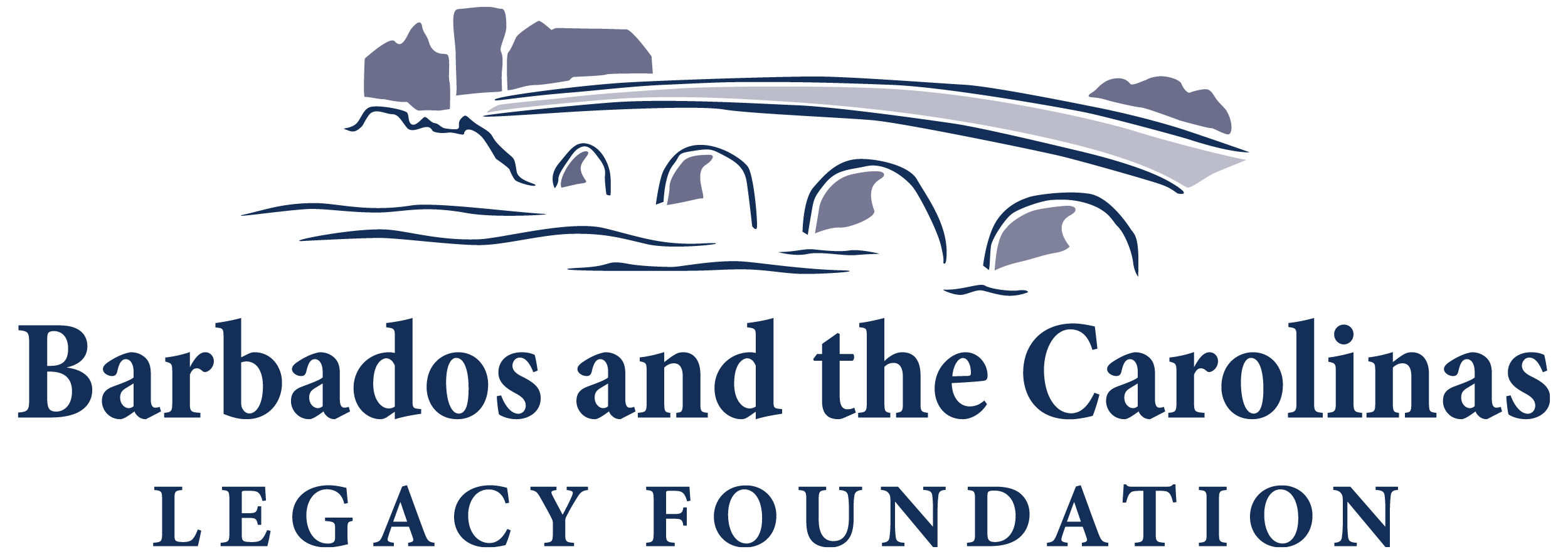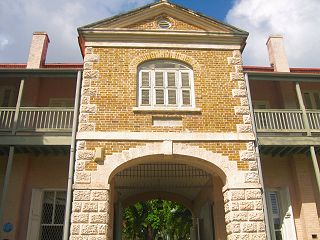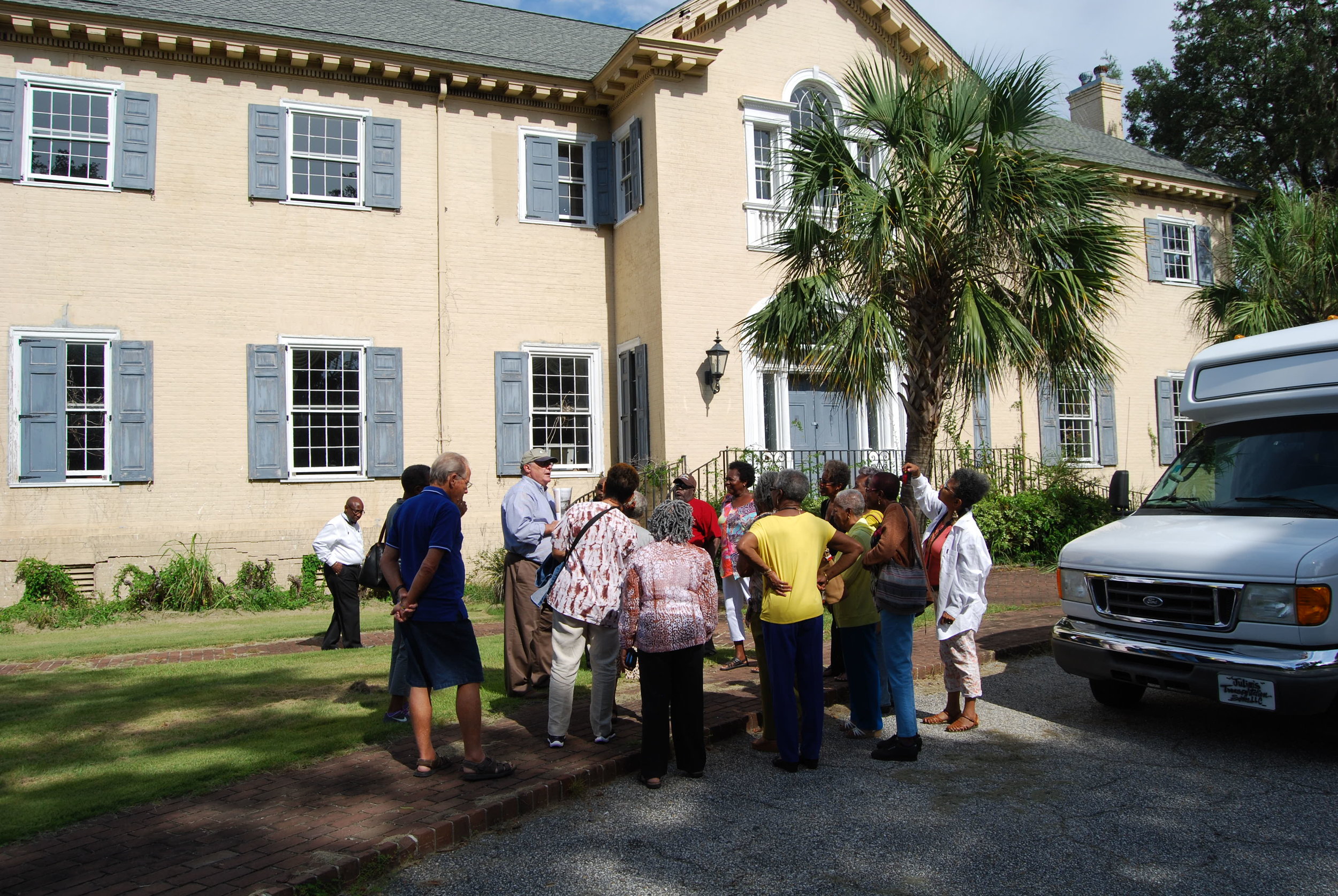Despite previously unsuccessful colonization attempts, dreams of territorial expansion and mounting economic pressures in the Caribbean settlements strengthened English resolve to stake their claim on the North American mainland. Carolina held the promise of providing England with what it required: a colony which could serve as a source of raw materials and a challenge to Spanish claims in the south Atlantic. Spain had twice attempted to settle Carolina at Port Royal between 1521 and 1587. In 1562, French Protestants also arrived at Port Royal, but they abandoned it after two years.In the 1620s, England had begun establishing a presence in the Caribbean and laid claim to Barbados and two other Lesser Antilles islands. Although a Portuguese mariner Pedro a Campos briefly landed at Barbados in 1536 during a voyage to Brazil, it wasn’t until 1627 that Englishman Henry Powell came to Barbados to establish the first settlement on the island. Ten enslaved Africans were obtained during the voyage and were among the first arrivals.
In the early years settlers struggled to survive on the island. Soil and climate conditions proved cotton and tobacco less than suitable for cultivation and their labor force was comprise predominantly of white indentured servants. Fortunes turned for the Barbadians when Dutch settlers who had recently been driven out of northeast Brazil by the Portuguese, introduced sugar planting to the island. Enslaved Africans began to replace white indentured servants who cost more and were often difficult to control.With the help of English capital, Barbados quickly developed an immensely successful sugar industry, and became the first plantation boom-economy in English-speaking North America. Barbados quickly became the richest colony in North America, with exports that were more than double that of all other island colonies combined; however, with over 55,000 people inhabiting 166 square miles, it also quickly became the most congested. Small farmers found it increasingly difficult to compete with large plantations, and available land became expensive and scarce. Many of these small farmers left for New England, Virginia, Surinam in South America and other Caribbean islands, particularly Jamaica. The need for new land renewed ideas of exploration of a Carolina colony. Eight Lords Proprietors had been the driving force behind earlier efforts to establish a colony on the continent. The Proprietors were noblemen who had received land grants and higher ranks in English nobility as a reward for helping to restore King Charles II to the throne of England after his father, King Charles I, was executed during the English Civil War. The names of these eight men – Edward Hyde, first earl of Clarendon; George Moncks, first duke of Albemarle; William Craven, first earl of Craven; Anthony Ashley Cooper, first earl of Shaftesbury; John Berkeley, first baron Berkeley of Stratton; and his brother Sir William Berkeley, governor of Virginia; Sir George Carteret; and Sir John Colleton – still mark many of the counties, towns, streets and rivers throughout the Lowcountry of South Carolina.
England had made two previous attempts to settle Carolina. In 1663, a group of New Englanders settled around the Cape Fear River, but returned to New England some months later claiming dissatisfaction with the land. That same year a group that called themselves the Barbadian Adventurers expressed an interest in settling Carolina. They hired William Hilton, for whom Hilton Head Island is named, to explore the Carolina coast. He returned with favorable reports about the land near the Cape Fear River. With a crew of 22 and supplies for seven months, the settlers left Speightstown, Barbados, on August 10, 1663, on a ship named the Adventure. They arrived at the Carolina coast on August 26, but the group could not reach an agreement with the proprietors, and the first English attempt to settle Carolina failed.To make the venture more attractive, in 1665 the Proprietors promised prospective settlers large land grants, religious freedom and the right to set their own laws. A second wave of settlers also arrived at Cape Fear and by 1666 the colony had 800 inhabitants. But a year later the community was abandoned and residents scattered to Virginia and New England. The colony’s failure was initially blamed on a lack of support from the Proprietors and attacks from the Native people. Historians have also argued that the second attempt to settle Carolina in the mid-1600s failed because England and the Proprietors had more pressing issues at home: England was at war with Holland, bubonic plague struck London, and the Great Fire caused widespread destruction in the capital city. The two failed attempts to settle Carolina did not deter Lord Ashley Cooper, who has been called the “spark plug” in efforts to establish the colony. He convinced other Proprietors to substantially increase their investment and recruit experienced settlers from other colonies, particularly the successful colony of Barbados, in another attempt to make Carolina a reality. In the third attempt, the Proprietors again promised religious freedom, generous land grants and the absolute power over enslaved people. In August 1669, three ships - Albemarle, Port Royal and Carolina - set out from England with Carolina as their destination. After a brief stop in Ireland, the fleet began a forty-day voyage to Barbados where the Albemarle was lost in a storm. It was replaced with a locally made sloop called The Three Brothers. After five months in port to take on supplies and Barbadian settlers the expedition set sail on February 26, 1670, along a circuitous route to Carolina. The voyage was not easy. The Port Royal ran aground in the Bahamas. When the other ships sailed to Bermuda a storm forced The Three Brothers to Virginia. On January 12, 1669, the Carolina limped into Bermuda. The Carolina eventually made landfall on March 15, thirty miles north of present-day Charleston at Bull’s Bay. The settlers originally had planned to establish a colony at Port Royal, south of Charleston, but a Kiawah chief urged the Englishmen to locate on the Ashley River. Historians have suggested that the chief wanted the English close as protection from the plundering Westo Indians. After comparing it with Port Royal, the settlers agreed on the Ashley River site. By settling several miles upriver on a high bluff, they would not be seen from the harbor and it also would be easier to defend against Spanish attack. In April 1670, about 130 colonists settled at a location they named Albemarle Point. On May 23, The Three Brothers arrived at Albemarle after a harrowing experience with Indians and Spaniards off the coast of what is now Georgia.
Initially, most of the colonists were English, with a few from Barbados. But over the next two years more than half of the white colonists and the enslaved Africans came from the tiny island. The Barbadians constituted a majority in the colony for the first two decades, but after the turn of the century the number of white settlers from other European countries would overtake the majority of Carolina’s the white population.
Raising cattle was the colony’s first large-scale agricultural endeavor. With mild weather and open grassland the colony was a natural for cattle. Carolina’s resources were also suitable for raising hogs. While Barbadians were familiar with cattle, Africans were more experienced at herding cattle on open grassland. Black labor soon replaced whites in the herding of swine and cattle on the open range. In 1708 the adult male slave population in the colony was 1,800, and nearly 1,000 of them were cowboys or “cattle-hunters.” Black cattle-hunters rounded up herds and drove them to pens where cattle were selected for slaughter. Before cattle could be slaughtered the law required that its owner first had to be identified – a problem that was quickly remedied by branding the cattle. Cattle drives, the cattle branding and cowboys were part of the colony more than 150 years before the practices existed in the American West.
On November 1, 1670, the settlement at Albemarle Point was renamed “Charles Towne.” Three days later, the Proprietors sent reports to Barbados that the colony was thriving, the Indians were friendly and land was plentiful. The public relations effort paid off. The Carolina made a return voyage to Charles Towne in early 1671 with 64 new settlers from the island. Soon they were followed by other planters who brought their slaves and servants. In December 1679 the Proprietors ordered the settlement moved from Albemarle Point to Oyster Point, at the tip of a peninsular flanked by the Ashley and Cooper rivers, named to honor Lord Ashley. The initial street grid for the new town at Oyster Point was laid out by Barbadian John Culpeper, the colony’s surveyor-general. During the early years of colonization, Barbados remained the primary portal for trade between the Carolina colony and the rest of the world. During the colony’s first three decades enslaved workers had more freedom than they would have later on. But in 1696, as the rice plantation system was beginning to take root, the colonists adopted the Barbados slave code that defined slaves as property and allowed a slaveholder to administer unbridled discipline. The Carolina slave codes were the harshest in the American colonies – murder, rape, assault and arson and stealing anything of value were punishable by death. Much of Carolina’s early economic, social, political and cultural customs were heavily influenced by the island colony, marking it with a distinct character unlike any other English settlements in North America.





